#assam
Text

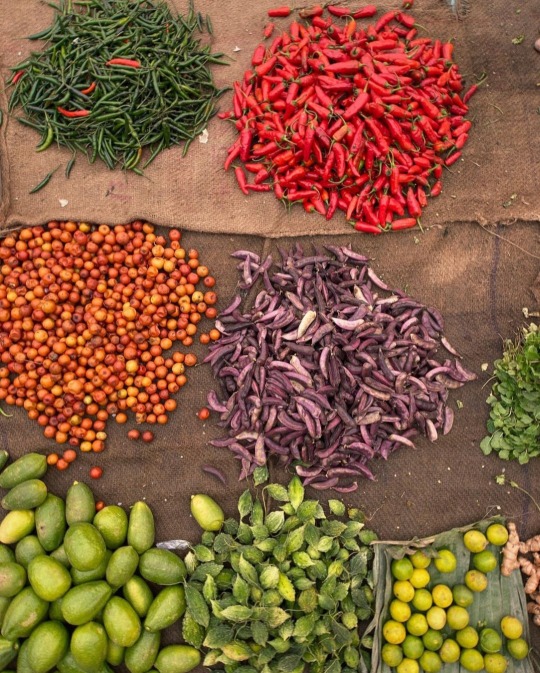

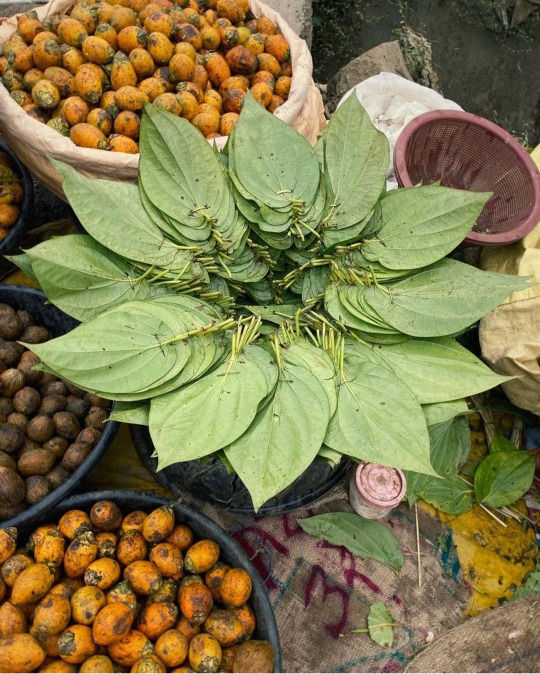
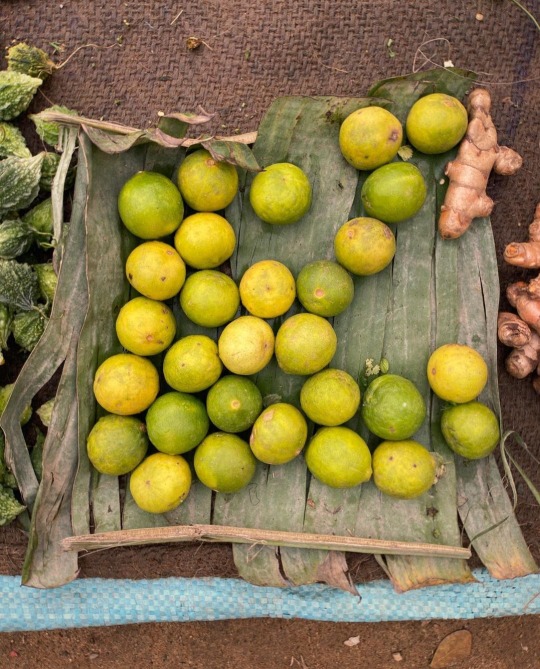

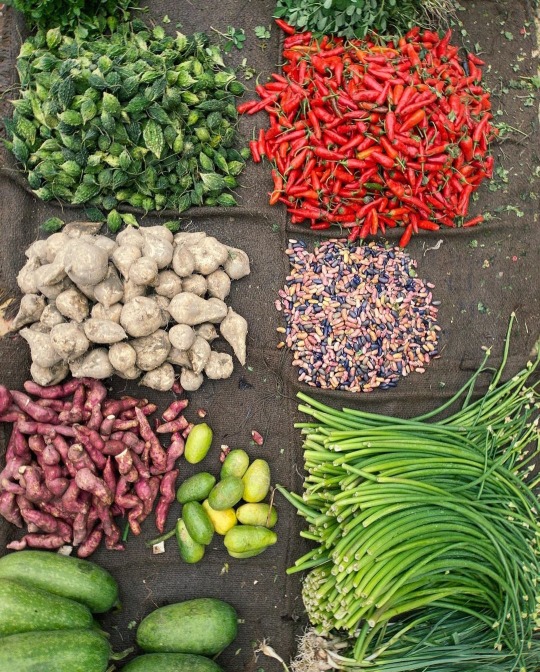
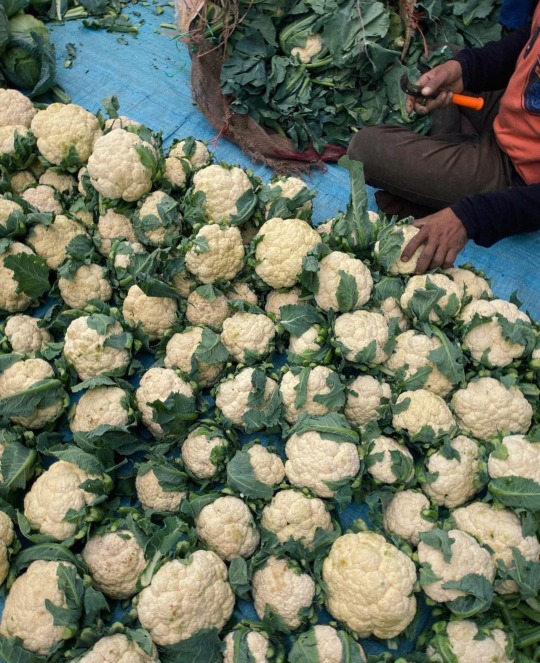
Markets of Assam by Imdad Barbhuyan
#imdad barbhuyan#assam#india#food photography#fruits#street photography#portrait photography#desi aesthetic#desi tumblr#desiblr#south asian#ph
4K notes
·
View notes
Text

Pygmy hog Porcula salvania
Observed by ehuetti, CC BY-NC
626 notes
·
View notes
Text

Audrey Hepburn and Assam at the Burbank Studios for the production of My Fair Lady in 1963
#audrey hepburn#movies#old movies#old hollywood glamour#old hollywood#fashion#classic#vintage#photography#style#1960s#on the set#behind the scenes#my fair lady#assam#eliza doolittle
96 notes
·
View notes
Text

Stilt Houses, Assam, India: Houses in Assam are built on stilts to prevent water from entering the houses during floods. As Assam is a region that receives heavy rainfall for the majority of the year, there are often chances of floods. As a preventive measure against flooding, houses in Assam are built on raised platforms or stilts
74 notes
·
View notes
Text
A walk through Bengal's architecture
Bengali architecture has a long and rich history, fusing indigenous elements from the Indian subcontinent with influences from other areas of the world. Present-day Bengal architecture includes the nation of Bangladesh as well as the Indian states of West Bengal, Tripura, and Assam's Barak Valley. West Bengal’s architecture is an amalgamation of ancient urban architecture, religious architecture, rural vernacular architecture, colonial townhouses and country houses, and modern urban styles. Bengal architecture is the architecture of Wind, Water, and Clay. The Pala Empire (750–1120), which was founded in Bengal and was the final Buddhist imperial force on the Indian subcontinent, saw the apex of ancient Bengali architecture. The majority of donations went to Buddhist stupas, temples, and viharas. Southeast Asian and Tibetan architecture was influenced by Pala architecture. The Grand Vihara of Somapura, which is now a UNESCO World Heritage Site, was the most well-known structure erected by the Pala rulers.

The Grand Vihara of Somapura
According to historians, the builders of Angkor Wat in Cambodia may have taken inspiration from Somapura. Bengal architecture became known for its use of terracotta due to the scarcity of stone in the area. Clay from the Bengal Delta was used to make bricks.
The temple architecture has distinct features like the rich wall decoration, often known as the terracotta temples, which was one of the remarkable elements of Bengali temple architecture. The double-roofed architecture of thatched huts was replicated by Bengali temples. Square platforms were used to construct the temples. Burnt brick panels with figures in geometric patterns or substantial sculptural compositions served as the temples' adornment.

Dochala style
These served as models for many temples that were built in undivided Bengal. Construction materials used in ancient times included wood and bamboo. Bengal has alluvial soil, so there isn't a lot of stone there. The bricks that were utilized to build the architectural components were made from stone, wood, black salt, and granite. Bengal has two different types of temples: the Rekha type, which is smooth or ridged curvilinear, and the Bhadra form, which has horizontal tiers that gradually get smaller and is made up of the amalaka sila. Mughal architecture, including forts, havelis, gardens, caravanserais, hammams, and fountains, spread throughout the area during the Mughal era in Bengal. Mosques built by the Mughals in Bengal also took on a distinctive regional look. The two major centers of Mughal architecture were Dhaka and Murshidabad. The do-chala roof custom from North India was imitated by the Mughals.

Jorasako thakurbari
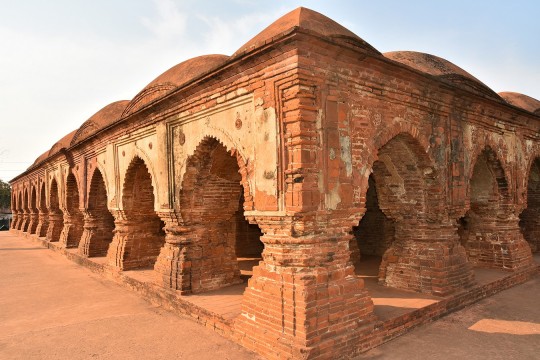
The Rasmancha is a heritage building located at Bishnupur, Bankura district, West Bengal.
Influence of the world on Bengal architecture: Although the Indo-Saracenic architectural style predominated in the area, Neo-Classical buildings from Europe were also present, particularly in or close to trading centers. While the majority of country estates had a stately country house, Calcutta, Dacca, Panam, and Chittagong all had extensive 19th and early 20th-century urban architecture that was equivalent to that of London, Sydney, or other British Empire towns. Calcutta experienced the onset of art deco in the 1930s. Indo-Saracenic architecture can be seen in Ahsan Manzil and Curzon Hall in Dhaka, Chittagong Court Building in Chittagong, and Hazarduari Palace in Murshidabad.
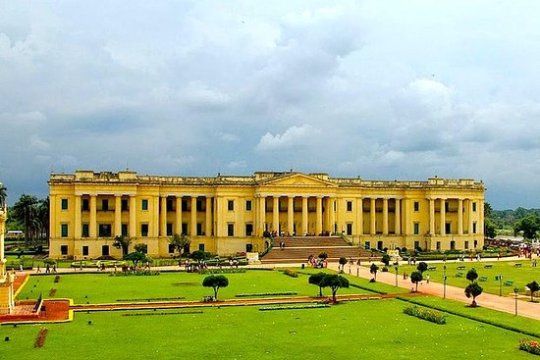
Hazarduari Palace in Murshidabad
The Victoria Memorial in Kolkata, designed by Vincent Esch also has Indo-Saracenic features, possibly inspired by the Taj Mahal. Additionally, Kolkata's bungalows, which are being demolished to make way for high-rise structures, have elements of art deco. The 1950s in Chittagong saw a continuation of Art Deco influences. The Bengali modernist movement, spearheaded by Muzharul Islam, was centered in East Pakistan. In the 1960s, many well-known international architects, such as Louis Kahn, Richard Neutra, Stanley Tigerman, Paul Rudolph, Robert Boughey, and Konstantinos Doxiadis, worked in the area.

The Jatiyo Sangshad Bhaban
This iconic piece of contemporary Bangladeshi architecture, was created by Louis Kahn. Midsized skyscrapers dominate the cityscapes of contemporary Bengali cities, which are frequently referred to as "concrete jungles." With well-known architects like Rafiq Azam, architecture services play a key role in the urban economies of the area. Overall Bengal architecture was influenced by various contemporaries of their time and continues to evolve.

Gothic architectural style seen in St. Paul's Cathedral in Kolkata.

Zamindar era buildings in ruin.

Belur Math in Howrah
#bengali#bangla#west bengal#bangladesh#tripura#assam#desi#বাংলা#india#architecture#tales#bengal architecture#history#kolkata#international#technology#information#temple#asia#bricks
168 notes
·
View notes
Text

Series: Koucha Ouji
Artist: Yamada Nanpei
Publication: Hana to Yume #1 (01/1998)
Details: Hana to Yume Deluxe Illustration Calendar 1998 (3-4)
Source: Scanned from my personal collection
#koucha ouji#tea prince#yoshioka taiko#assam#earl grey#yamada nanpei#nanpei yamada#scan: hotwaterandmilk#furoku#hana to yume#shoujo manga#shoujo#90s manga#manga art#90s aesthetic#manga aesthetic#retro manga
29 notes
·
View notes
Photo
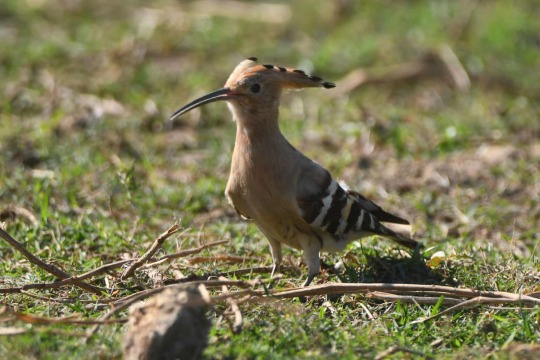
A Eurasian hoopoe looking for grubs at a field in the Nagaon district of Assam, India.
Photograph: Anuwar Hazarika/NurPhoto/REX/Shutterstock
#anuwar hazarika#photographer#nurphoto#rex#shutterstock#eurasian hoopoe#bird photography#animal#nagaon district#assam#india#nature
67 notes
·
View notes
Photo

Five Headed Durga Idol at Kamakhya Temple, Guwahati, Assam (via Instagram: Priyanka Pareek)
151 notes
·
View notes
Photo
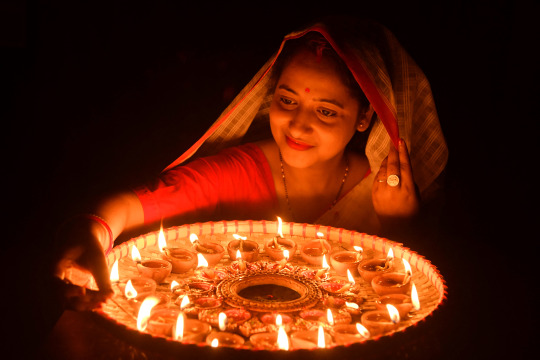
October 2022: A woman lights earthen lamps to celebrate Diwali, the Hindu festival of lights, at her house in Guwahati, Assam. [Biju Boro/AFP]
365 notes
·
View notes
Link
“In May 2021, a new Chief Minister of the Indian state of Assam set out to thoroughly put an end to poaching in the state’s protected areas.
Now 20 months later, the forestry and police departments of the state have reported that 2022 saw no rhinos lost to poaching, the first time that’s happened since 1977.
Located on the borders of [Tibet] to the north and Myanmar to the east, Assam is one of the richest biodiversity zones in the world and contains Kaziranga, Manas, and Orang national parks as well as Pobitora Wildlife Sanctuary.
[The Indian state of Assam is hope to approximately 85% of the world’s population of the Indian rhinoceros.]
Together these four protected areas make up most of the one-horned rhinoceros’ range in the country, and of the 2,895 rhinos in the state, nearly all of that number can be found inside them.
Chief Minister Sarma put together a special anti-poaching task force led by Special Director General of Police G. P. Singh. The task force created a database of past incidents of rhino poaching with details of when, how, and where they took place. Convicted poachers had their phones monitored, and local fishermen and villagers were brought on as informants.
When the work came to inside the park, the rhinos were treated like presidents. Sophisticated police commando teams patrolled the parks with night vision equipment and drones, and the number of teams increased on full moon nights.
When flooding in Kaziranga drove the rhinos to higher ground during the 2022 monsoon season, the teams stayed in the field 24-7 until the animals could disperse again after the waters receded.
“If we continue with this pressure, rhino poaching will stop completely,” Singh told the Hindustan Times. “For this, the cost to poachers has to be higher than the profit they earn.”
A colleague notes that the coordination has become so thorough that poacher arrest rates are now being measured weekly, rather than monthly as before.
It’s this kind of devotion that has seen the numbers of one-horned rhinos climb from just around 100 individuals in 1910, to almost 3,000 today.”
-via Good News Network, 1/26/23
#rhino#rhinoceros#poaching#conservation#endangered species#india#assam#protected areas#good news#hope
54 notes
·
View notes
Text

Bira from Assamese folklore.
Sorcerers typically harness the power of Bira for personal gain. The interaction with Bira carries a cost, as the sorcerer must sacrifice a portion of their soul to it. Additionally, if Bira is not content, it has the potential to turn against the sorcerer, highlighting the precarious nature of the relationship between the mystical entity and its master. Descriptions of Bira vary, with some depicting it as a large black dog with red eyes, while others believe it can shape shift based on circumstances. In Assamese culture, Bira is regarded as one of the most menacing and dreaded entities.
Bira is a form of poltergeist often unleashed upon a family by an adversary. Its malevolent influence can result in physical harm, mental anguish, and, in extreme cases, even lead to death for those it targets.
In a tale, a curious boy named Raju, intrigued by Bira stories, sought to witness it firsthand. Sneaking into a sorcerer's home, he discovered Bira in a cage and attempted to touch it. In response, Bira bit Raju's hand, causing him to faint. Upon awakening, Raju found himself transformed into a Bira, confined in the cage, and manipulated by the sorcerer for nefarious purposes. Indeed, the account suggests that the Bira's form can be transferred to a human through a bite, leading to a transformation of the individual into a Bira.
Other lore suggest that Bira possesses the ability to either impregnate women or become pregnant by men, resulting in offspring known as Bira-putra. These hybrid beings inherit certain abilities and traits from their Bira parent, creating a unique blend of human and Bira characteristics.
Iron acts as a deterrent to Bira, causing harm and serving as a basis for protective charms and weapons. Holy water weakens and purifies Bira, offering a means to cleanse those affected by it. A priest or sorcerer, knowledgeable in dealing with Bira, can exorcise or control it through rituals and spells, providing protection for individuals and locations.
Follow @mecthology for more lores and tales.
Pic generated by AI.
Source: nenow, indiatoday, thehindu
#mecthology#creepy#supernatural#legends#weird#folklore#folktale#horror#bira#assam#poltergeist#dangerous#malevolent
7 notes
·
View notes
Text

Wild water buffalo Bubalus arnee
Observed by paulschrijvershof, CC BY-NC-ND
133 notes
·
View notes
Text


Audrey Hepburn and Assam during the production of My Fair Lady.
Photography by Cecil Beaton
1963
#fred astaire#assam#my fair lady#vintage#classic#style#photography#fashion#old hollywood#old hollywood glamour#movies#cecil beaton#audrey hepburn#1963#1960s#on the set#behind the scenes#yorkshire terrier#bicycle
428 notes
·
View notes
Text


লিখি লোৱা, মই এজন মিঞা ("Write Down 'I am a Miyah'", 2016) by Hafiz Ahmed, translated from Assamese to English by Shalim M. Hussain, began a movement of resistance poetry among Assamese Muslims of Bengali descent, referred to as Miya Poetry after a slur used to describe this community. From Abdul Kalam Azad, for Indian Express ("Write...I am a Miya", 2019):
This poem went viral and other young poets started responding to him through poems. The young poets also started reclaiming “Miya”, a slur used against us, as our identity with pride. This chain of Facebook posts continued for days, reiterating the violence, suffering and humiliation expressed by our community.
As time passed, more poets wrote in various languages and dialects, including many Miya dialects. The nomenclature ‘Miya Poetry’ got generated organically but the poets and their associates have been inspired by the Negritude and Black Arts movements, and queer, feminist and Dalit literary movements, where the oppressed have reclaimed the identity which was used to dehumanise them.
The trend transcended our community. Poets from the mainstream Assamese community also wrote several poems in solidarity with the Miya poets while some regretted not being poets. Gradually, this became a full-fledged poetry movement and got recognised by other poets, critics and commentators. The quality and soul of these poems are so universal that they started finding prominence on reputed platforms.
For the first time in the history of our community, we had started telling our own stories and reclaiming the Miya identity to fight against our harassers who were dehumanising us with the same word. They accused us of portraying the whole Assamese society as xenophobic. The fact is we have just analysed our conditions. Forget generalising the Assamese society as ‘xenophobic’, no Miya poet has ever used the term ‘xenophobic’ nor any of its variants. The guilt complex of our accusers is so profound that they don’t have the patience to examine why we wrote the poems.
Amrita Singh, writing for The Caravan ("Assam Against Itself", 2019), detailed the political backlash against Miya Poetry, in particular the above poem.
On 10 July this year, Pranabjit Doloi, an Assam-based journalist, filed a complaint at Guwahati’s Panbazar police station accusing ten people of indulging in criminal activities “to defame the Assamese people as Xenophobic in the world.” Doloi claimed that the ten people were trying to hinder the ongoing updation of the National Register of Citizens, a list of Assam’s Indian citizens that is due to be published on 31 August. The premise of Doloi’s complaint was a widely-circulated poem called, “Write down I am Miya,” by Hafiz Ahmed, a school teacher and social activist. “Write. Write down I am a Miya/ A citizen of democratic secular republic without any rights,” Ahmed wrote. The police registered a first information report against Doloi’s complaint, booking all ten persons for promoting enmity between groups, among other offences.
[...]
At the press conference, Mander emphasised that people in Assam are in distress because of the NRC’s arbitrary and rigid procedures. “One spelling mistake when you are writing a Bengali name in English … that is enough for you to be in a detention center, declared a foreigner,” Mander said. “If you are not allowing this lament to come out in the form of poetry, then where is this republic of India going?”
Ahmed's poem is influenced in structure by "Identity Card", a 1964 poem by by Palestinian poet Mahmoud Darwish which uses the symbolic figure of the Palestinian working man to confront Israeli occupiers. Darwish's identity card, a symbol of Israeli subjugation transformed into a cry of Palestinian national identity, is reshaped by Ahmed into the National Register of Citizens for Assam and the accompanying fear of statelessness and disenfranchisement for the Miya people.
This solidarity between writers from oppressed groups is, of course, not one that ends with Darwish and Ahmed, nor with the Black, queer, feminist, and Dalit influences of Miya Poetry. As long as there is oppression, there will be companionship and recognition reflected in art and activism. On December 13, 2023, Black Agenda Report reprinted Refaat Alareer's "If I Must Die", acknowledging the connection between Alareer's poem and "If We Must Die" by Claude McKay, written in 1919 in response to the Red Summer white supremacist riots. In 2000, Haitian community activist Dahoud Andre translated "If We Must Die" into Kreyòl, and the Black Agenda Report editorial honors Alareer in a similar way, reprinting "If I Must Die" with an accompanying Kreyòl translation. (POEM: If I Must Die, Refaat Alareer, 2023.)
Transcripts under the cut.




[Hafiz Ahmed Transcripts (Assamese and English):
লিখি লোৱা, মই এজন মিঞা
লিখা,
লিখি লোৱা
মই এজন মিঞা
এন. আৰ. চিৰ ক্রমিক নং ২০০৫৪৩
দুজন সন্তানৰ বাপেক মই,
অহাবাৰ গ্ৰীষ্মত জন্ম ল’ব আৰু এজনে
তাকো তুমি ঘিণ কৰিবা নেকি
যিদৰে ঘিণ কৰা মোক?
লিখি লোৱা,
মই এজন মিঞা
পতিত ভূমি, পিতনিক
মই ৰূপান্তৰিত কৰিছোঁ
শস্য-শ্যামলা সেউজী পথাৰলৈ
তোমাক খুৱাবলৈ
মই ইটা কঢ়িয়াইছোঁ
তোমাৰ অট্টালিকা সাজিবলৈ,
তোমাৰ গাড়ী চলাইছোঁ
তোমাক আৰাম দিবলৈ,
তোমাৰ নৰ্দমা ছাফা কৰিছোঁ
তোমাক নিৰোগী কৰি ৰাখিবলৈ,
তোমাৰে সেৱাতে মগন মই অনবৰত
তাৰ পিছতো কিয় তুমি খৰ্গহস্ত?
লিখা,
লিখি লোৱা
মই এজন মিঞা
গণতান্ত্ৰিক, গণৰাজ্য এখনৰ নাগৰিক এজন
যাৰ কোনো অধিকাৰ নাইকিয়া
মাতৃক মোৰ সজোৱা হৈছে সন্দেহযুক্ত ভোটাৰ
যদিও পিতৃ-মাতৃ তাইৰ নিঃসন্দেহে ভাৰতীয়
ইচ্ছা কৰিলেই তুমি মোক হত্যা কৰিব পাৰা,
জ্বলাই দিব পৰা মোৰ খেৰৰ পঁজা,
খেদি দিব পাৰা মোক মোৰেই গাঁৱৰ পৰা,
কাঢ়ি নিব পাৰা মোৰ সেউজী পথাৰ
মোৰ বুকুৰ ওপৰেৰে চলাব পাৰা
তোমাৰ বুলড্জাৰ
তোমাৰ বুলেটে বুকুখন মোৰ
কৰিব পাৰে থকাসৰকা
(তোমাৰ এই কাৰ্যৰ বাবে তুমি কোনো
স্তিও নোপোৱা)
যুগ-যুগান্তৰ তোমাৰ অত্যাচাৰ সহ্য কৰি
ব্ৰহ্মপুত্ৰৰ চৰত বাস কৰা
মই এজন মিঞা
মোৰ দেহা হৈ পৰিছে নিগ্ৰো কলা
মোৰ চকুযুৰি অঙঠাৰ দৰে ৰঙা
সাৱধান!
মোৰ দুচকুত জমা হৈ আছে
যুগ যুগান্তৰৰ বঞ্চনাৰ বাৰুদ
আঁতৰি যোৱা,
নতুবা
অচিৰেই পৰিণত হ’বা মূল্যহীন ছাইত!
Write Down ‘I am a Miyah’
Hafiz Ahmed, 2016
trans. Shalim M. Hussain
Write
Write Down
I am a Miya
My serial number in the NRC is 200543
I have two children
Another is coming
Next summer.
Will you hate him
As you hate me?
write
I am a Miya
I turn waste, marshy lands
To green paddy fields
To feed you.
I carry bricks
To build your buildings
Drive your car
For your comfort
Clean your drain
To keep you healthy.
I have always been
In your service
And yet
you are dissatisfied!
Write down
I am a Miya,
A citizen of a democratic, secular, Republic
Without any rights
My mother a D voter,
Though her parents are Indian.
If you wish kill me, drive me from my village,
Snatch my green fields
hire bulldozers
To roll over me.
Your bullets
Can shatter my breast
for no crime.
Write
I am a Miya
Of the Brahamaputra
Your torture
Has burnt my body black
Reddened my eyes with fire.
Beware!
I have nothing but anger in stock.
Keep away!
Or
Turn to Ashes.
]
[Mahmoud Darwish Transcripts (Arabic and English):
سجِّل
أنا عربي
ورقمُ بطاقتي خمسونَ ألفْ
وأطفالي ثمانيةٌ
وتاسعهُم.. سيأتي بعدَ صيفْ!
فهلْ تغضبْ؟
سجِّلْ
أنا عربي
وأعملُ مع رفاقِ الكدحِ في محجرْ
وأطفالي ثمانيةٌ
أسلُّ لهمْ رغيفَ الخبزِ،
والأثوابَ والدفترْ
من الصخرِ
ولا أتوسَّلُ الصدقاتِ من بابِكْ
ولا أصغرْ
أمامَ بلاطِ أعتابكْ
فهل تغضب؟
سجل
أنا عربي
أنا اسم بلا لقبِ
صَبورٌ في بلادٍ كلُّ ما فيها
يعيشُ بفَوْرةِ الغضبِ
جذوري
قبلَ ميلادِ الزمانِ رستْ
وقبلَ تفتّحِ الحقبِ
وقبلَ السّروِ والزيتونِ
.. وقبلَ ترعرعِ العشبِ
أبي.. من أسرةِ المحراثِ
لا من سادةٍ نُجُبِ
وجدّي كانَ فلاحاً
بلا حسبٍ.. ولا نسبِ!
يُعَلّمني شموخَ الشمسِ قبلَ قراءةِ الكتبِ
وبيتي’ كوخُ ناطورٍ
منَ الأعوادِ والقصبِ
فهل تُرضيكَ منزلتي؟
أنا اسم بلا لقبِ!
سجلْ
أنا عربي
ولونُ الشعرِ.. فحميٌّ
ولونُ العينِ.. بنيٌّ
وميزاتي:
على رأسي عقالٌ فوقَ كوفيّه
وكفّي صلبةٌ كالصخرِ...
تخمشُ من يلامسَها
وعنواني:
أنا من قريةٍ عزلاءَ منسيّهْ
شوارعُها بلا أسماء
وكلُّ رجالها في الحقلِ والمحجرْ
فهل تغضبْ؟
سجِّل!
أنا عربي
سلبتُ كرومَ أجدادي
وأرضاً كنتُ أفلحُها
أنا وجميعُ أولادي
ولم تتركْ لنا.. ولكلِّ أحفادي
سوى هذي الصخورِ...
فهل ستأخذُها
حكومتكمْ.. كما قيلا!؟
إذنْ
سجِّل.. برأسِ الصفحةِ الأولى
أنا لا أكرهُ الناسَ
ولا أسطو على أحدٍ
ولكنّي.. إذا ما جعتُ
آكلُ لحمَ مغتصبي
حذارِ.. حذارِ.. من جوعي
ومن غضبي!!
Identity Card
Mahmoud Darwish, 1964
trans. Denys Johnson-Davies
Put it on record.
I am an Arab
And the number of my card is fifty thousand
I have eight children
And the ninth is due after summer.
What's there to be angry about?
Put it on record.
I am an Arab
Working with comrades of toil in a quarry.
I have eight children
For them I wrest the loaf of bread,
The clothes and exercise books
From the rocks
And beg for no alms at your door,
Lower not myself at your doorstep.
What's there to be angry about?
Put it on record.
I am an Arab.
I am a name without a title,
Patient in a country where everything
Lives in a whirlpool of anger.
My roots
Took hold before the birth of time
Before the burgeoning of the ages,
Before cypress and olive trees,
Before the proliferation of weeds.
My father is from the family of the plough
Not from highborn nobles.
And my grandfather was a peasant
Without line or genealogy.
My house is a watchman's hut
Made of sticks and reeds.
Does my status satisfy you?
I am a name without a surname.
Put it on record.
I am an Arab.
Color of hair: jet black.
Color of eyes: brown.
My distinguishing features:
On my head the `iqal cords over a keffiyeh
Scratching him who touches it.
My address:
I'm from a village, remote, forgotten,
Its streets without name
And all its men in the fields and quarry.
What's there to be angry about?
Put it on record.
I am an Arab.
You stole my forefathers' vineyards
And land I used to till,
I and all my children,
And you left us and all my grandchildren
Nothing but these rocks.
Will your government be taking them too
As is being said?
So!
Put it on record at the top of page one:
I don't hate people,
I trespass on no one's property.
And yet, if I were to become hungry
I shall eat the flesh of my usurper.
Beware, beware of my hunger
And of my anger!
]
#it speaks!#re: the tag on my last reblogged post. decided to make that point its own post!#this is long obviously and im employing proper capitalization for ease of reading#obligatory im monolingual disclaimer & cant vouch for translation quality; i chose the johnson-davies translation because ->#<- it is the one i see most commonly spread. i take responsibility for any deficiencies.#going to use some tags because im personally interested in this poetic movement & connection & maybe other people will be too!#palestine#palestinian poetry#assam#miya poetry#political poetry#poetry
5 notes
·
View notes
Text
সবাইকে দোল পূর্ণিমার শুভেচ্ছা! 🎨 Happy Dol Pūrṇimā!
Happy Holi to the rest of the subcontinent! 🎨
#bengali#bangla#india#bangladesh#west bengal#tripura#assam#jharkhand#বাংলা#desi#langblr#colours#colours in bengali#language learning#poll#dol poornima#dol jatra#holi#2023#color#colour#festival
93 notes
·
View notes
Text

Series: Koucha Ouji
Artist: Yamada Nanpei
Publication: Hana to Yume #1 (01/2002)
Details: 2002 Hana to Yume All Star Art Calendar (April)
Source: Scanned from my personal collection
#koucha ouji#tea prince#紅茶王子#yoshioka taiko#assam#earl grey#yamada nanpei#nanpei yamada#scan: hotwaterandmilk#furoku#hana to yume#shoujo manga#shoujo#00s manga#manga art#00s aesthetic#manga aesthetic#food tw
21 notes
·
View notes